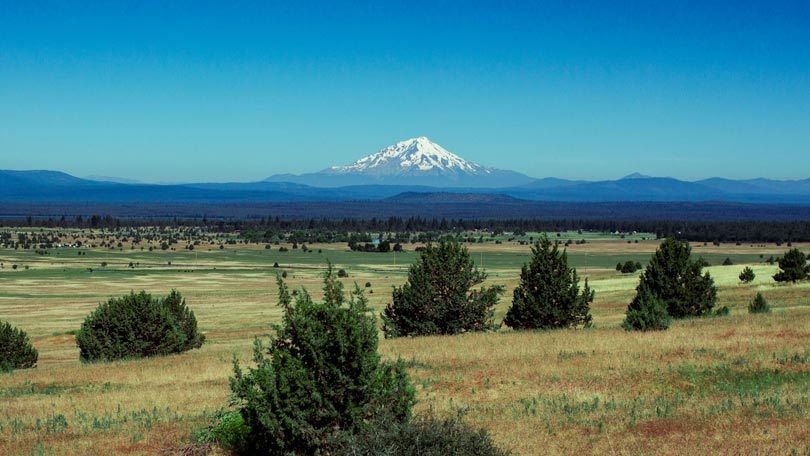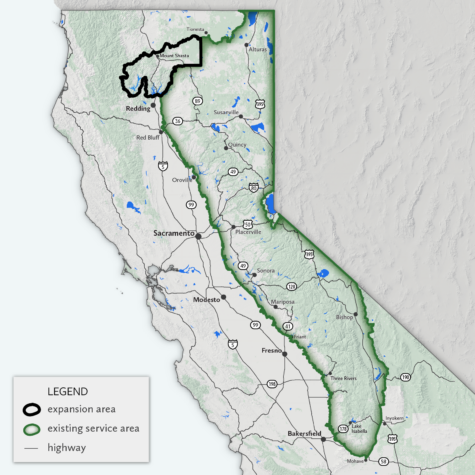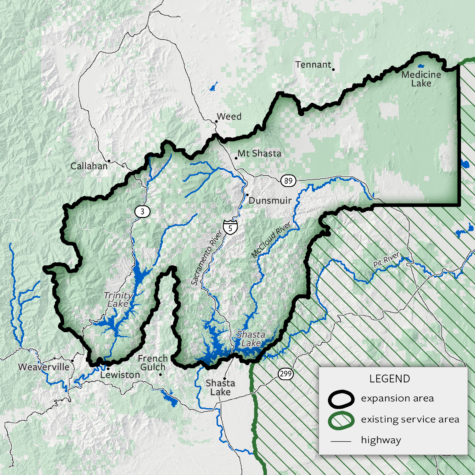
For 17-plus years, the Sierra Nevada Conservancy has been successfully supporting efforts to improve the environmental, economic, and social well-being of the Sierra Nevada region. Starting next year, the state agency will add nearly two million more acres to its service area, including vital Northern California forests and water sources, such as Shasta Lake.
“This is a tremendous and exciting change. The forests in this new region sequester enormous amounts of carbon, protect and improve the state’s water supply and air quality, support biodiversity and wildlife habitat, and provide endless outdoor recreation opportunities for all. It is also an area that has witnessed tree mortality due to extreme drought, large, damaging wildfires, and attacks from insects and disease. It is an honor to now have the authority to provide funding and technical assistance in order to support resilient forests, watersheds, recreation, and communities here.”
Starting January 1, 2022, the Sierra Nevada Conservancy’s boundary will expand into parts of Siskiyou and Trinity counties, while also including more of Shasta County. Currently, the service area includes 25 million acres in 22 counties. After the new year, it will include all or part of 24 counties and increase its area to nearly 27 million acres. The most immediate impact is that nonprofit organizations, resource conservation districts, local governments, tribes, and other eligible entities within the newly expanded area will have the opportunity to apply for funding for local assistance grants through the Sierra Nevada Conservancy’s holistic Watershed Improvement Program (WIP).
Over the course of the next year, the Sierra Nevada Conservancy will develop additional recommendations for legislative consideration that will allow it to better serve this newly expanded region and staff will be reaching out to build relationships and support project development in the new area.
Adding Shasta Lake, California’s largest reservoir
The boundary change brings all of the source watersheds that feed California’s developed water supply system into the Conservancy’s region, as well. That means more of the Pitt River watershed and additional parts of the Upper Sacramento and McCloud river watersheds, which flow into Shasta Lake, the state’s largest reservoir, will become part of the region. Mount Shasta’s snowy slopes, and large reservoirs like Shasta Lake and Trinity Lake, are also included in the expansion.

The expanded region provides water to more than 75% of Californians and vast swathes of Central Valley farmland.
Adding these vital watersheds and storage reservoirs is exactly why Senator Brian Dahle (R-Bieber), who represents the northern part of the Sierra Nevada Conservancy’s region, co-authored the bill with Senator John Laird (D-Santa Cruz), one of the authors of the original legislation creating the Sierra Nevada Conservancy in 2014.
“I’m pleased to be adding portions of Siskiyou, Shasta and Trinity Counties under the Sierra Nevada Conservancy. The Conservancy has a superior reputation for thoughtful stewardship of one of California’s most important resources, our headwaters,” said Senator Dahle. “By having all these headwaters under one local agency, it will give more opportunities to implement important forest management projects as well as meadow-restoration projects to ensure that we continue to have healthy forests and a robust headwaters system.”


